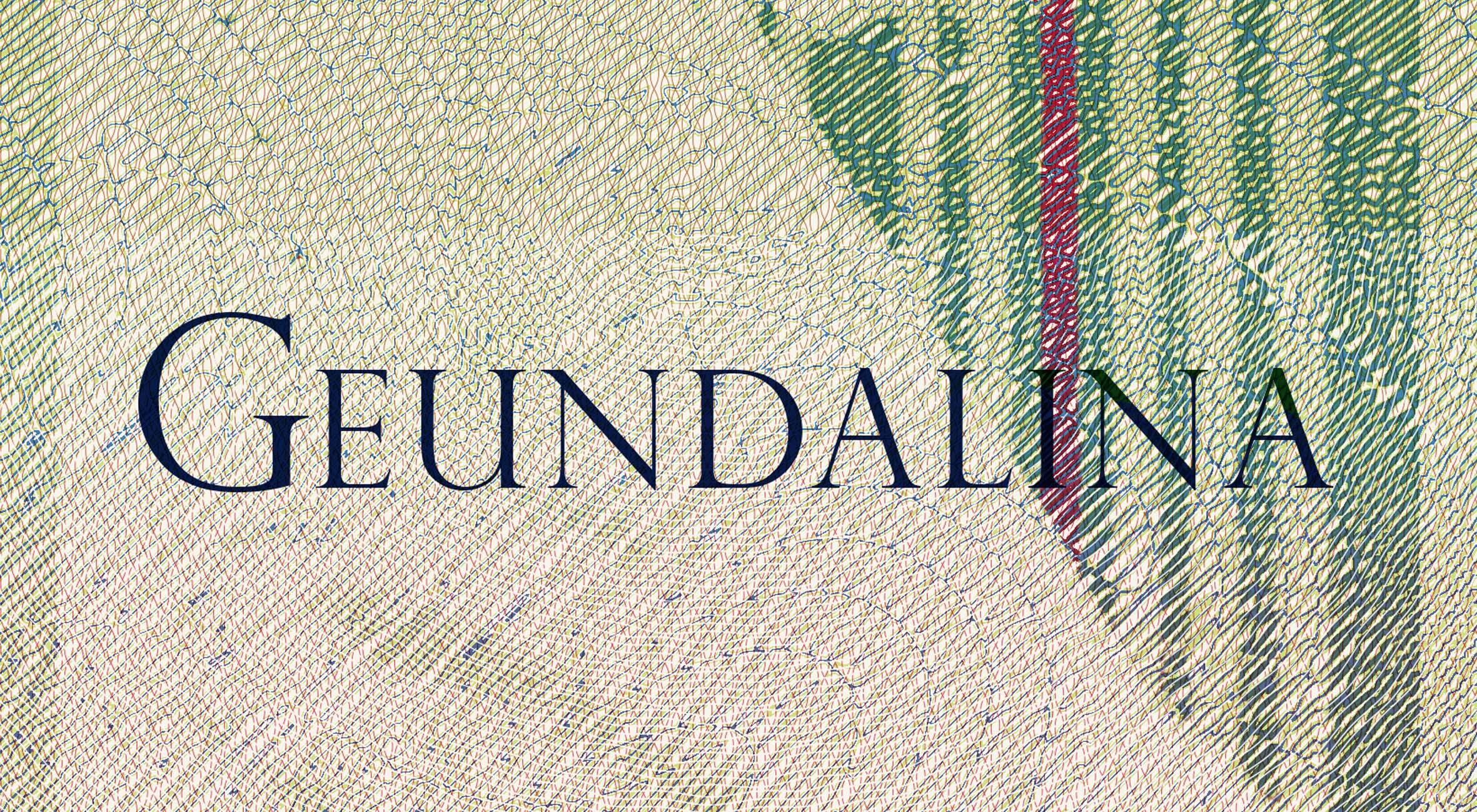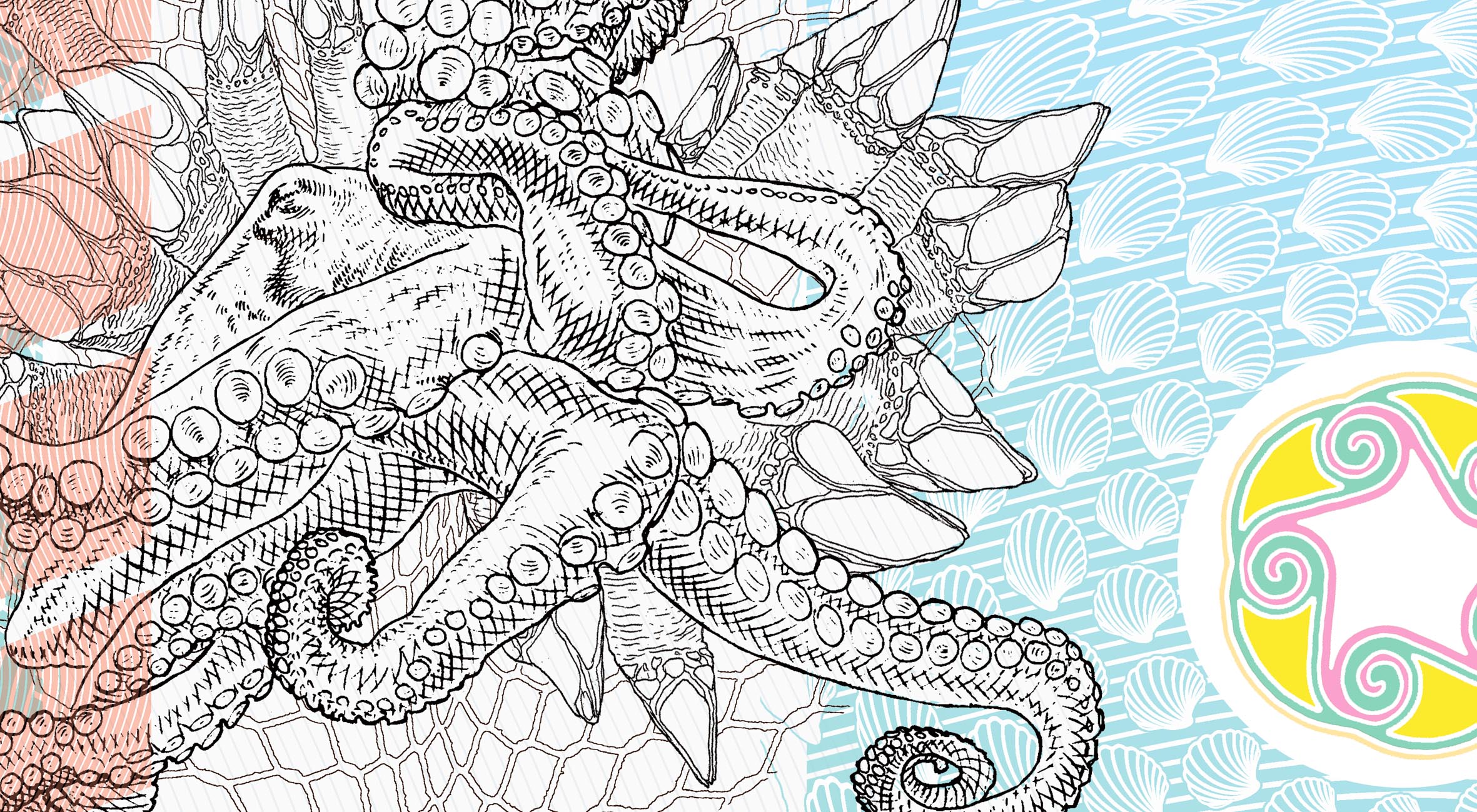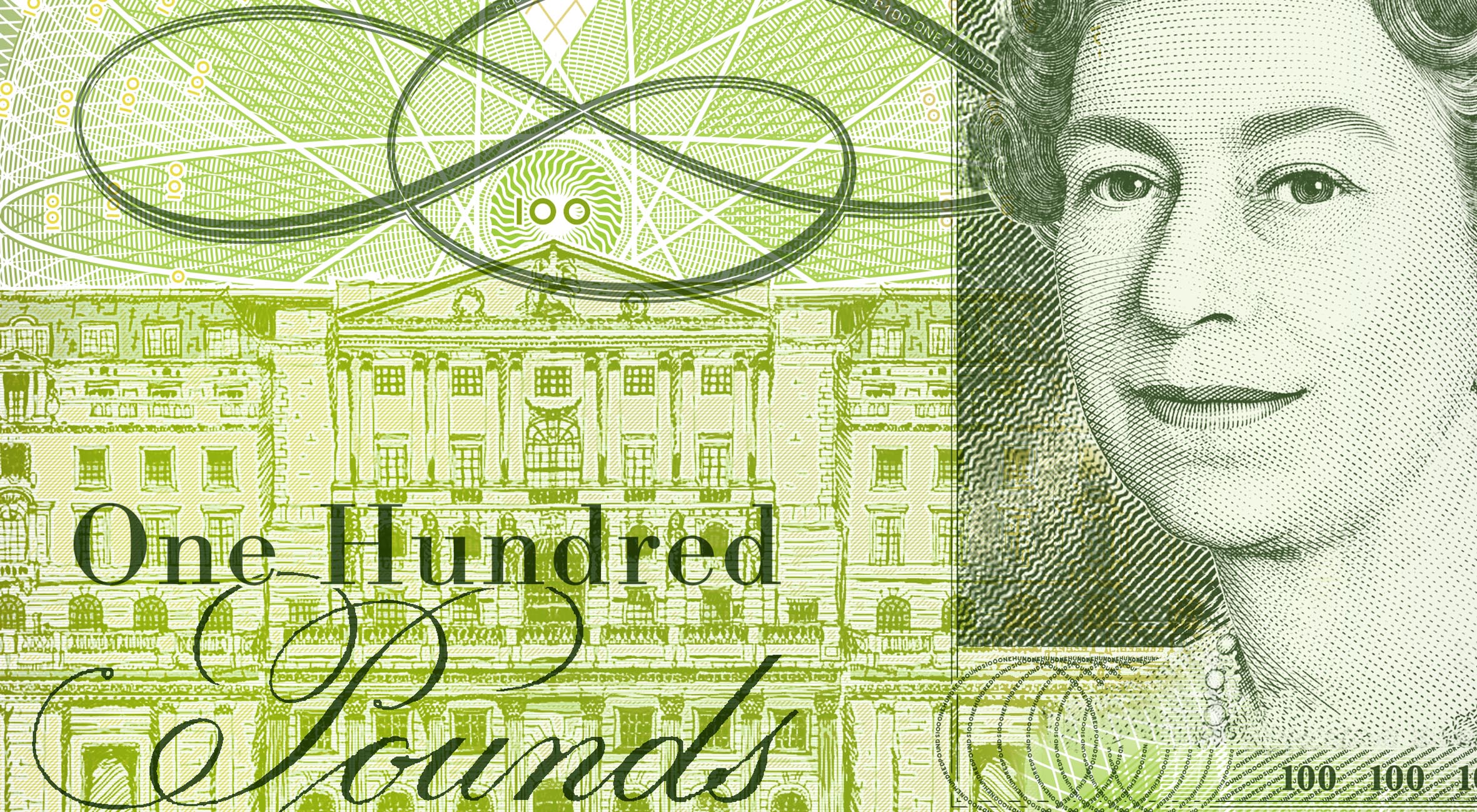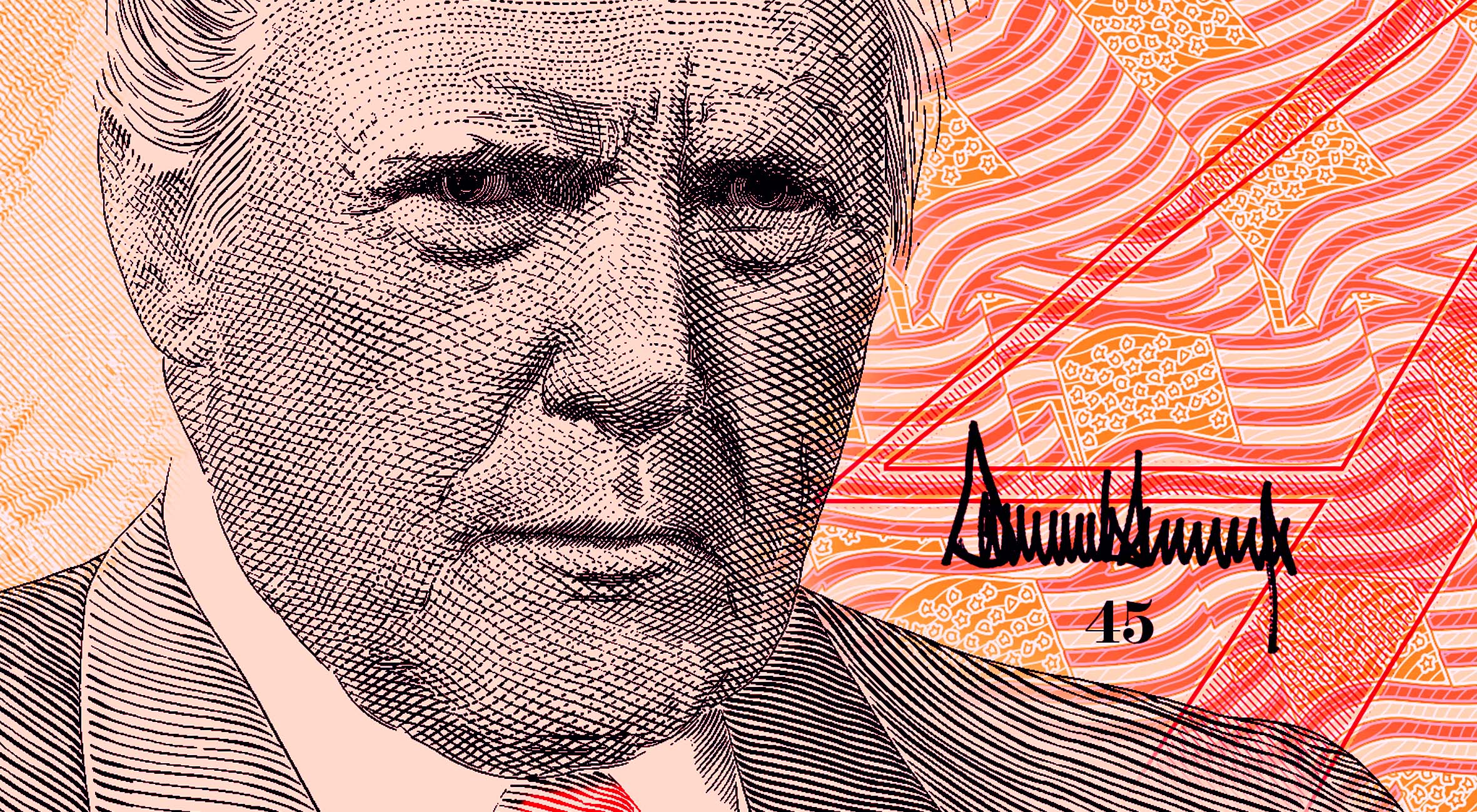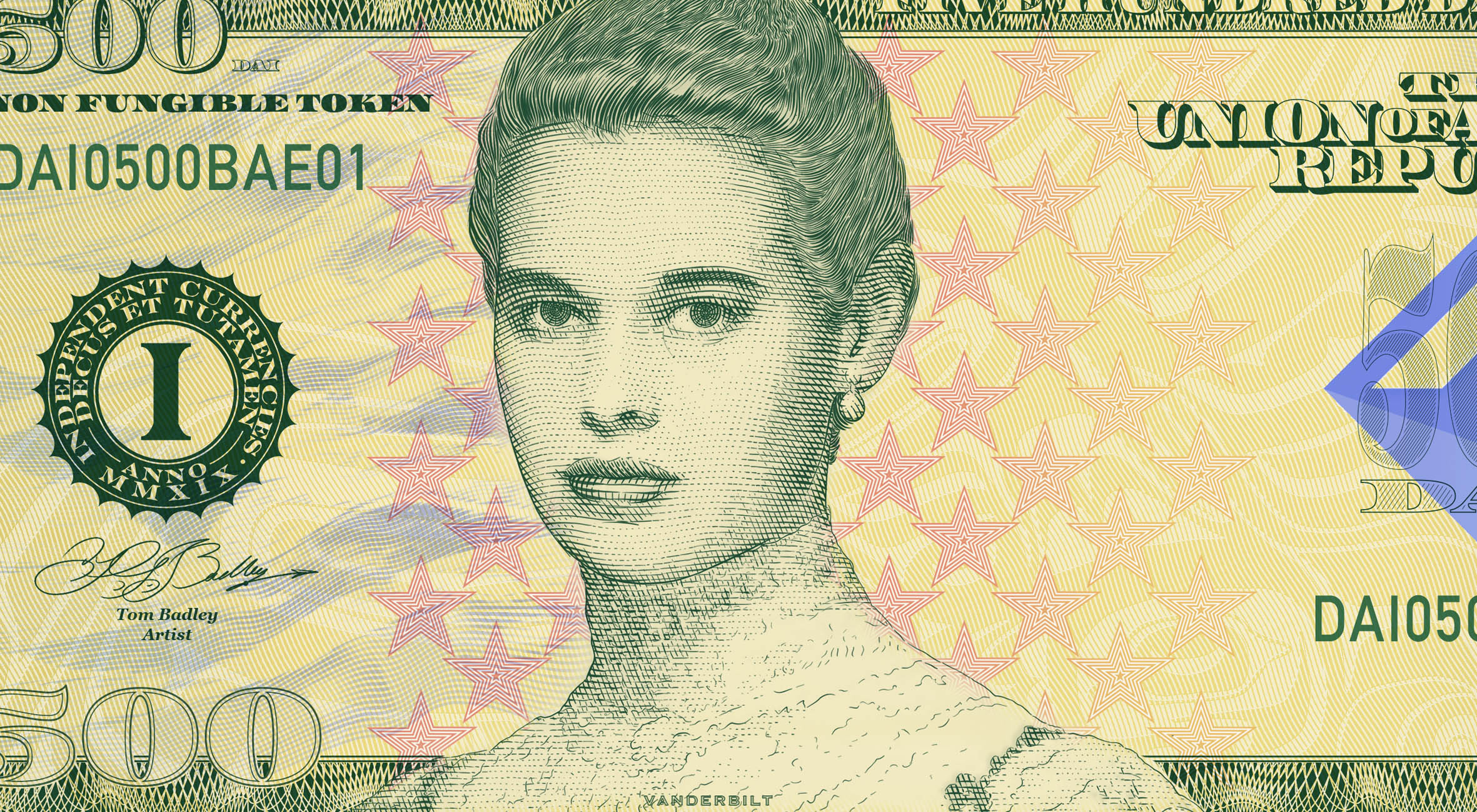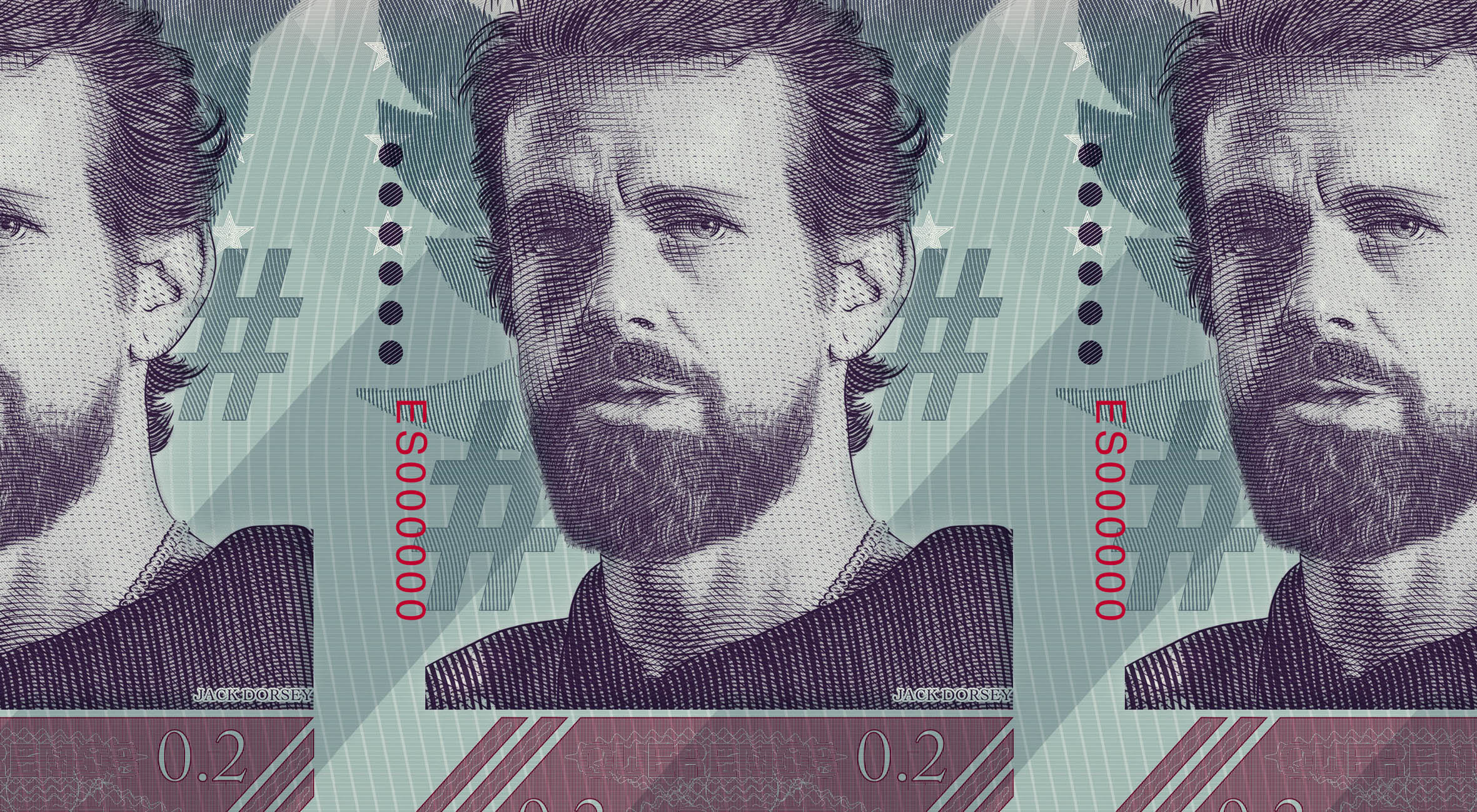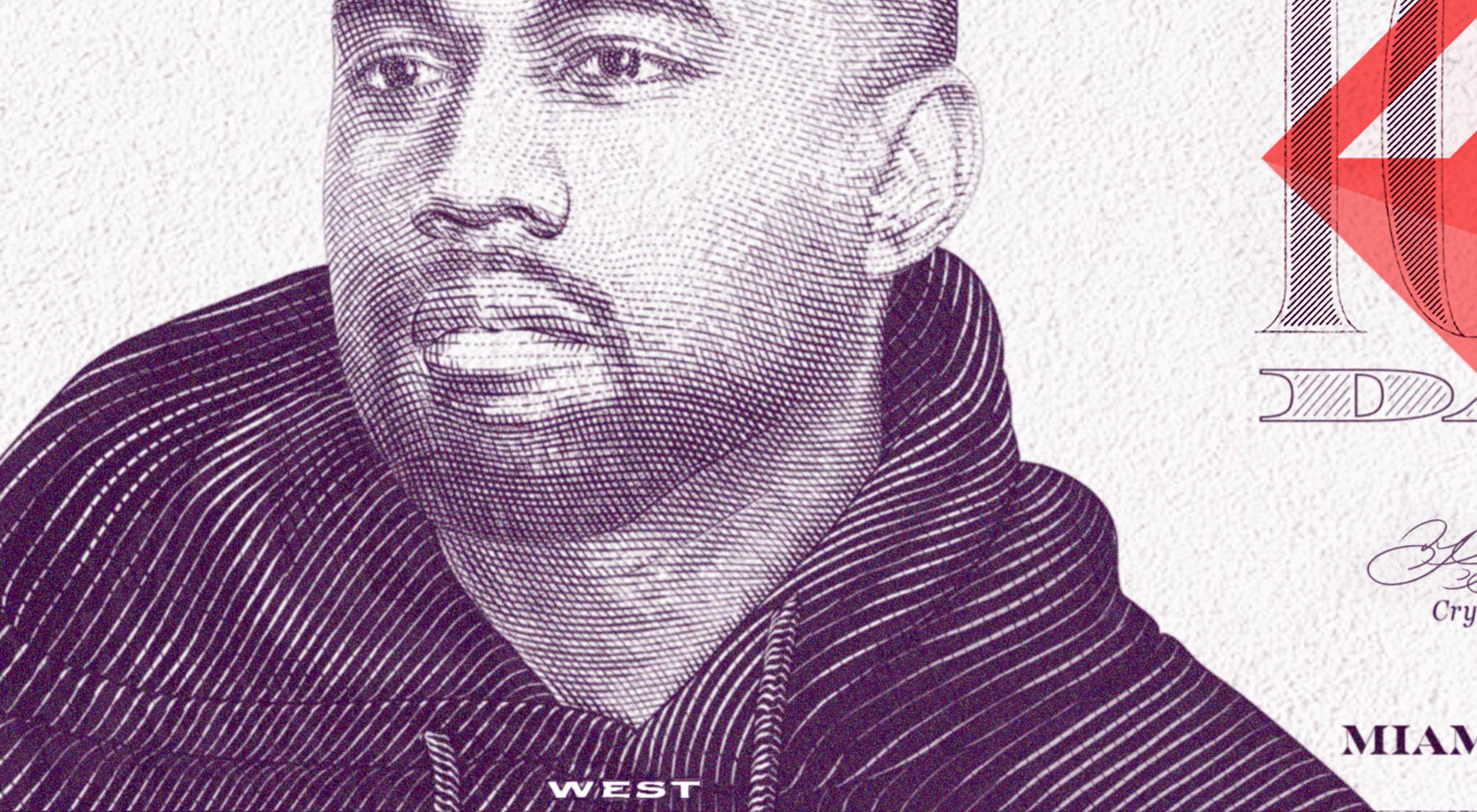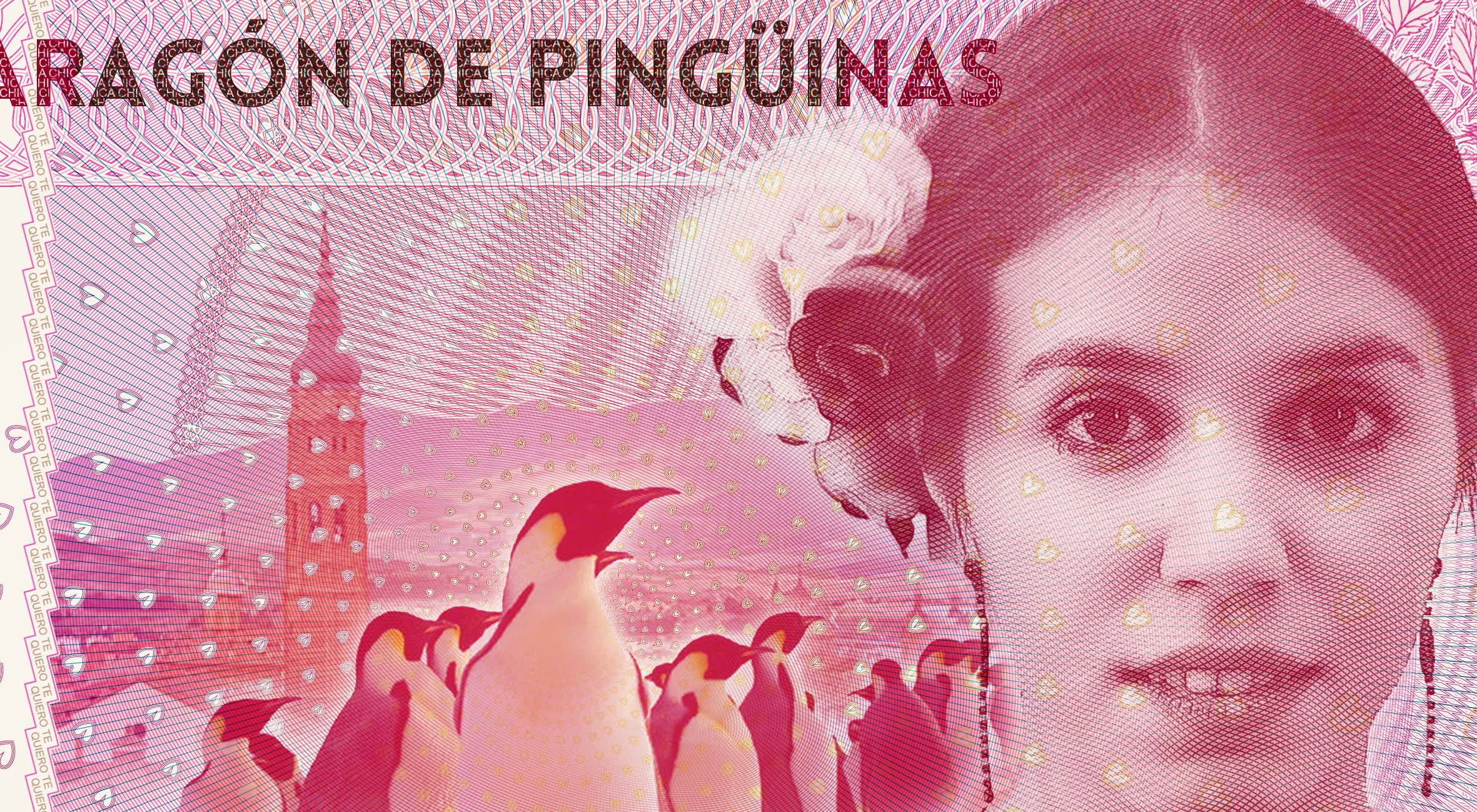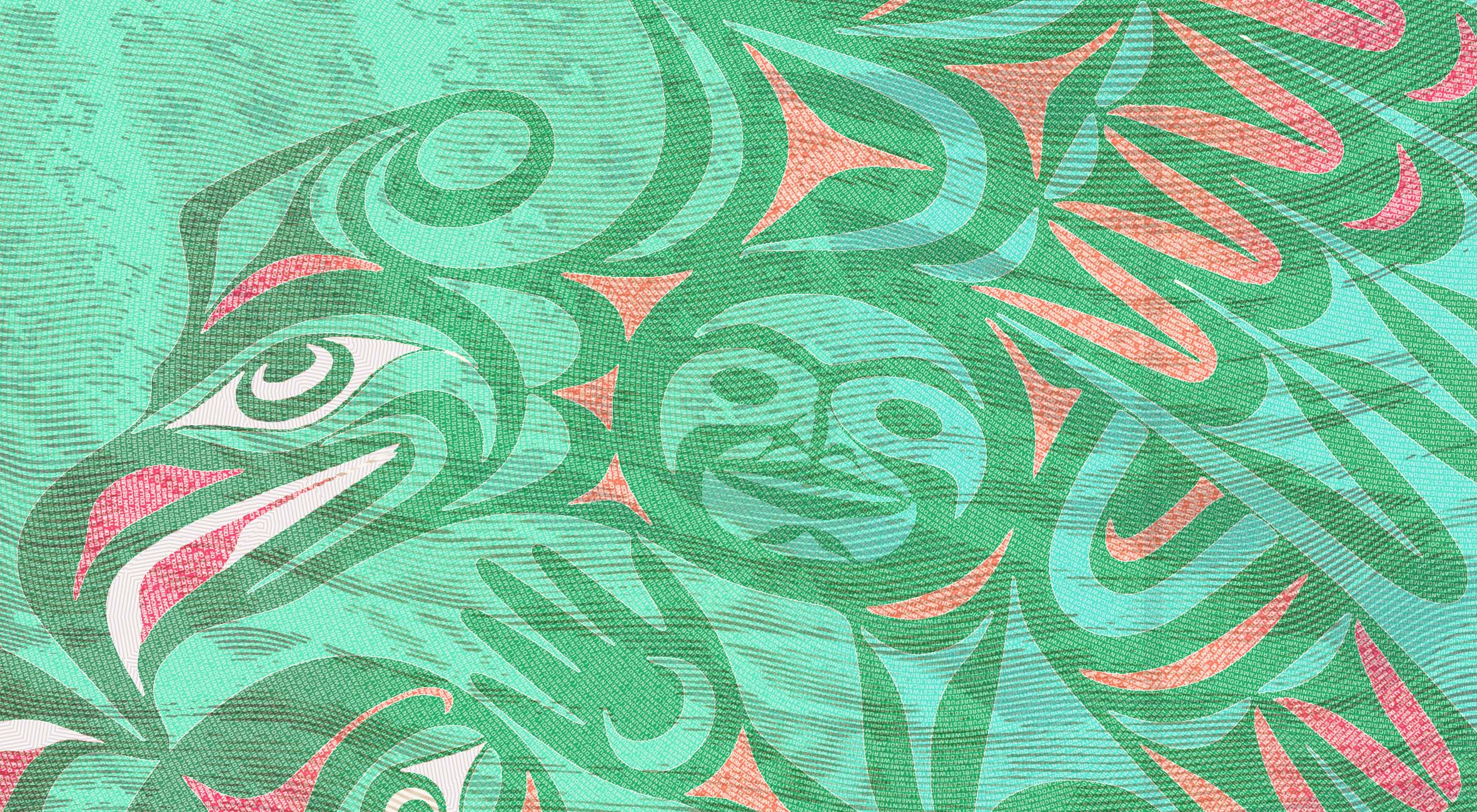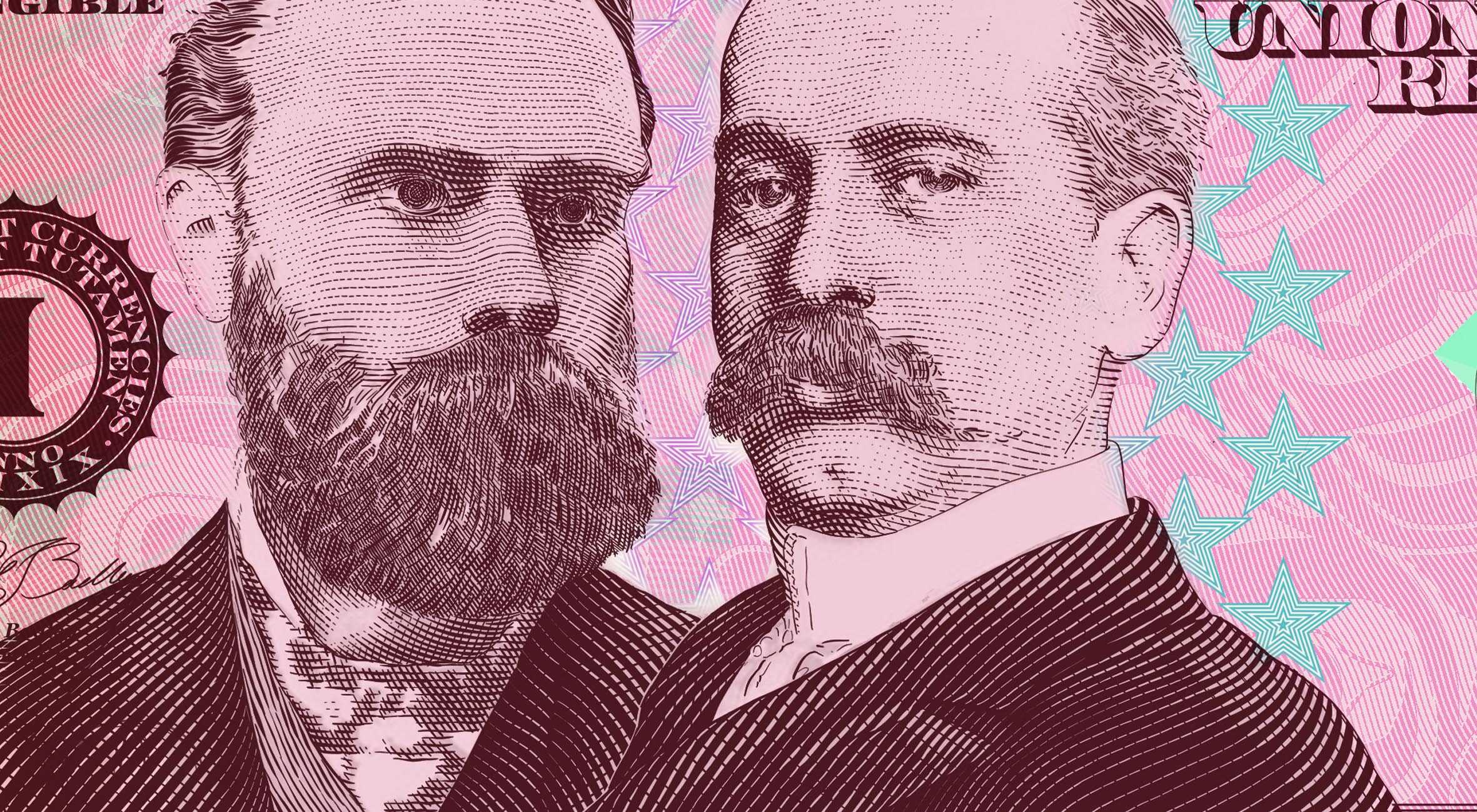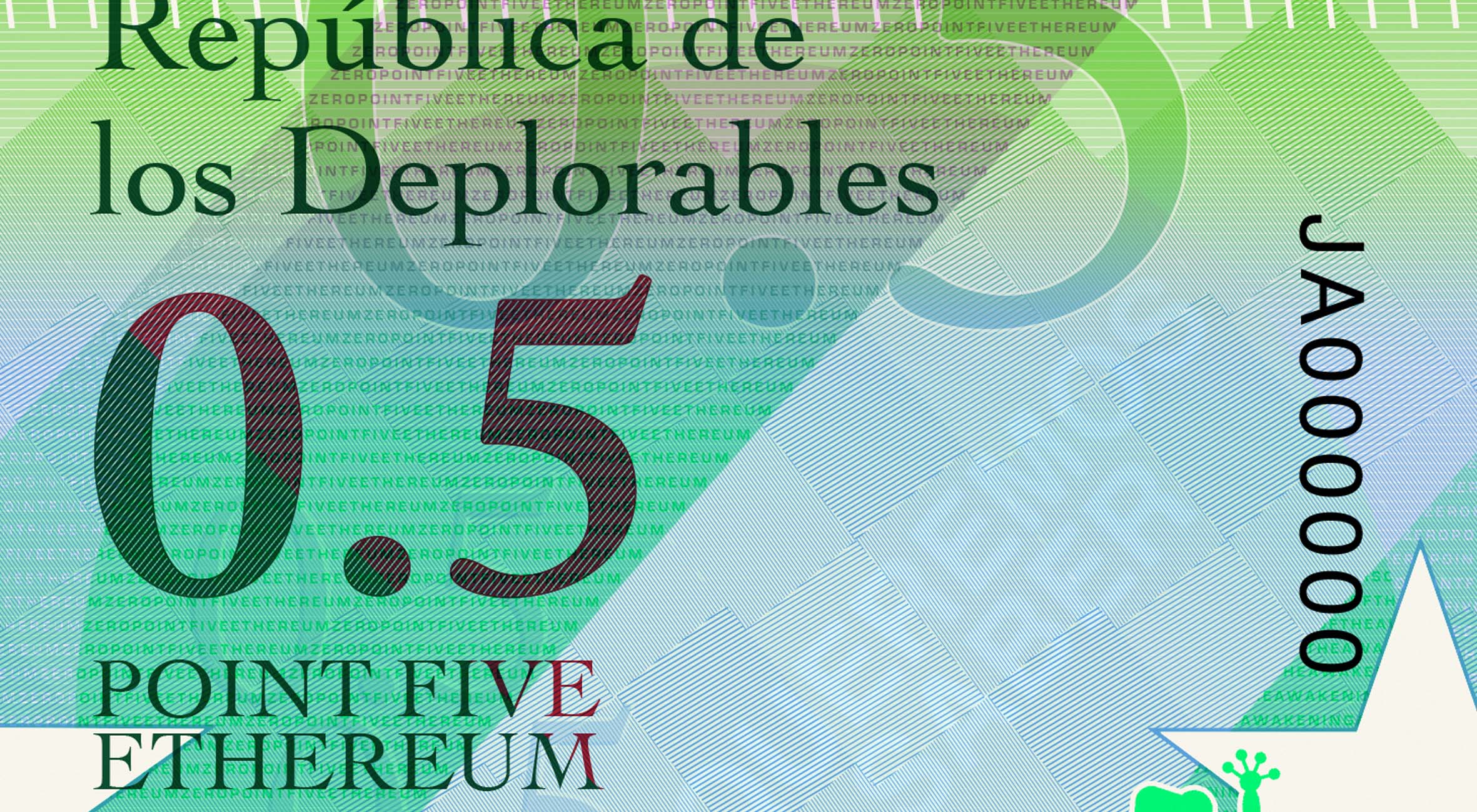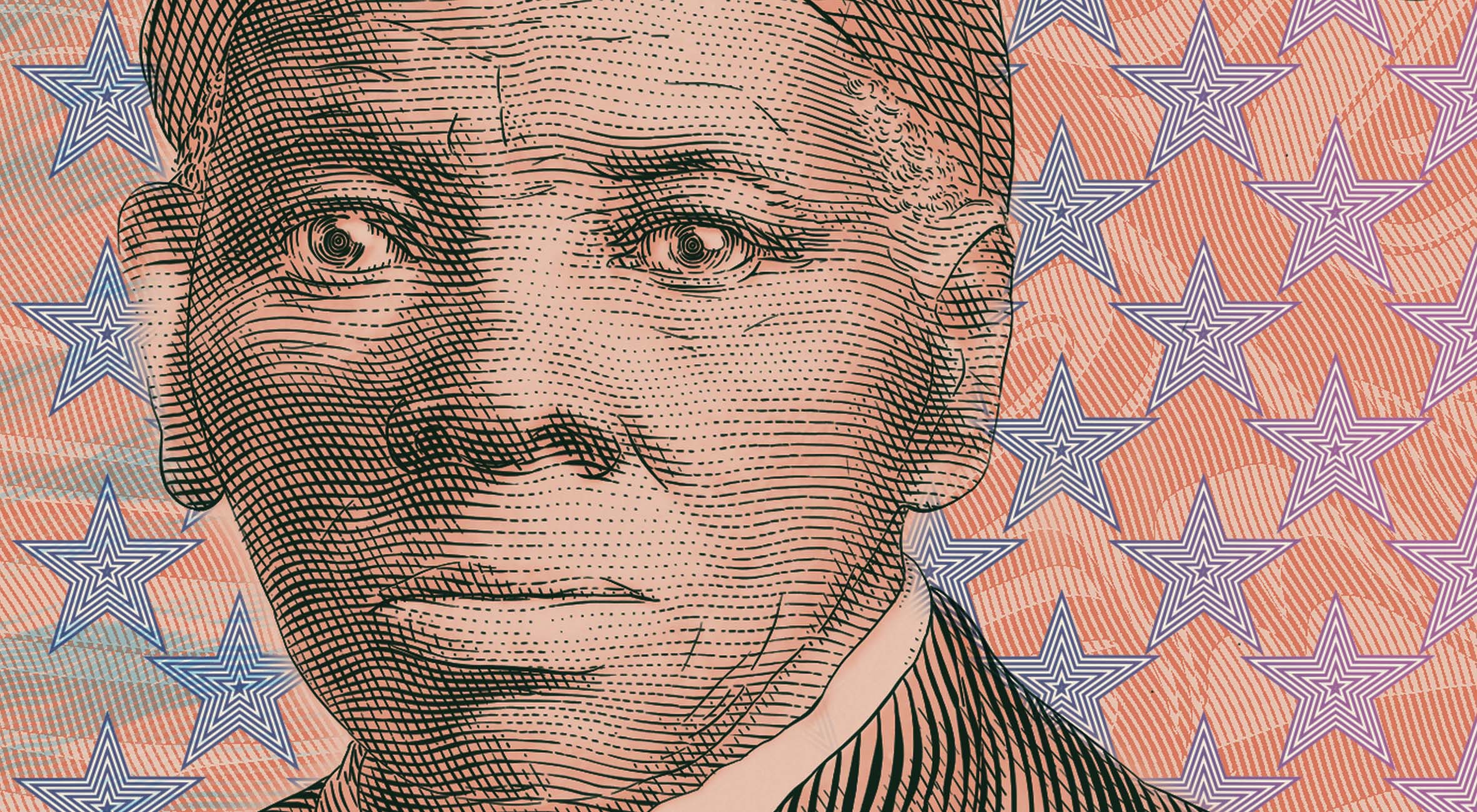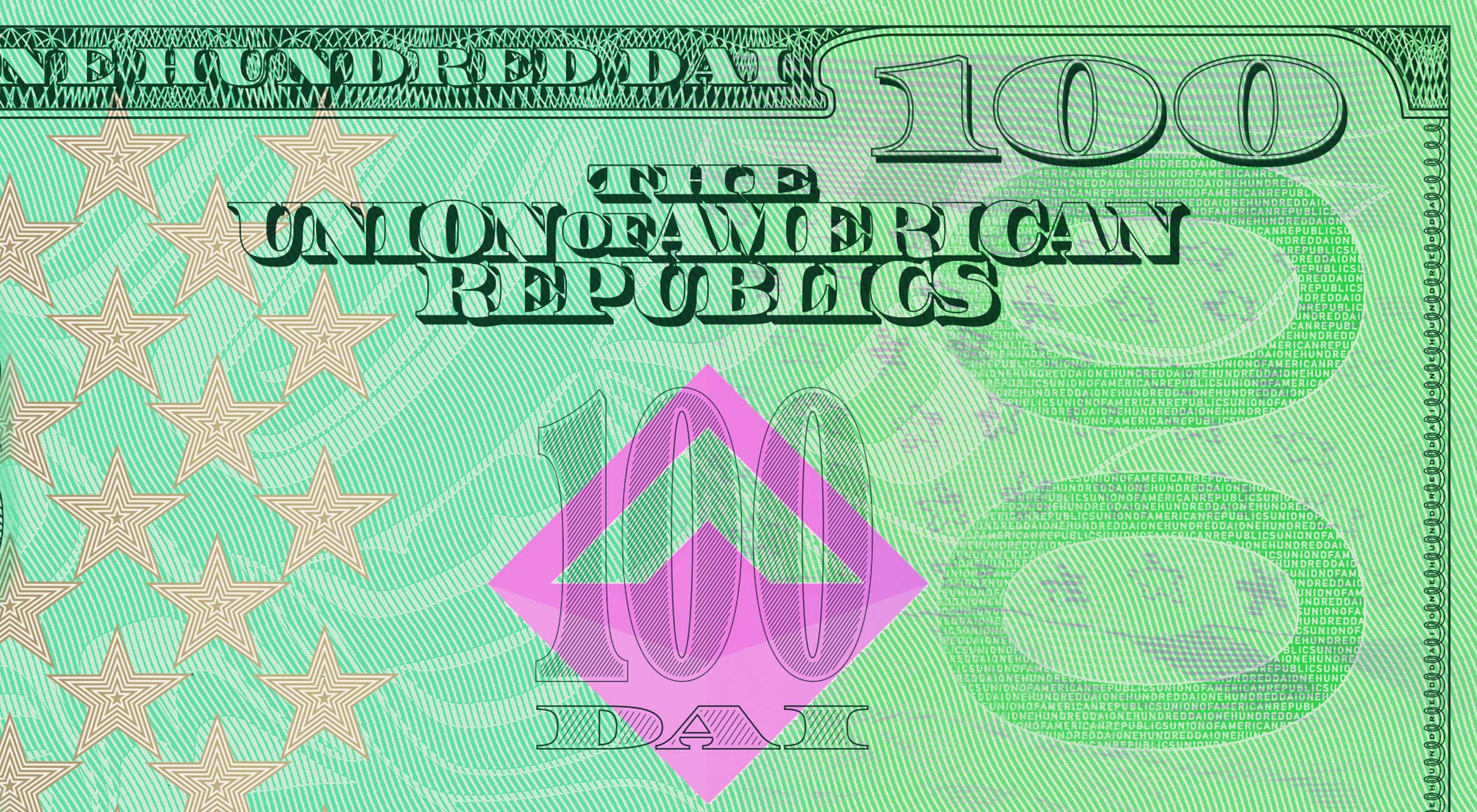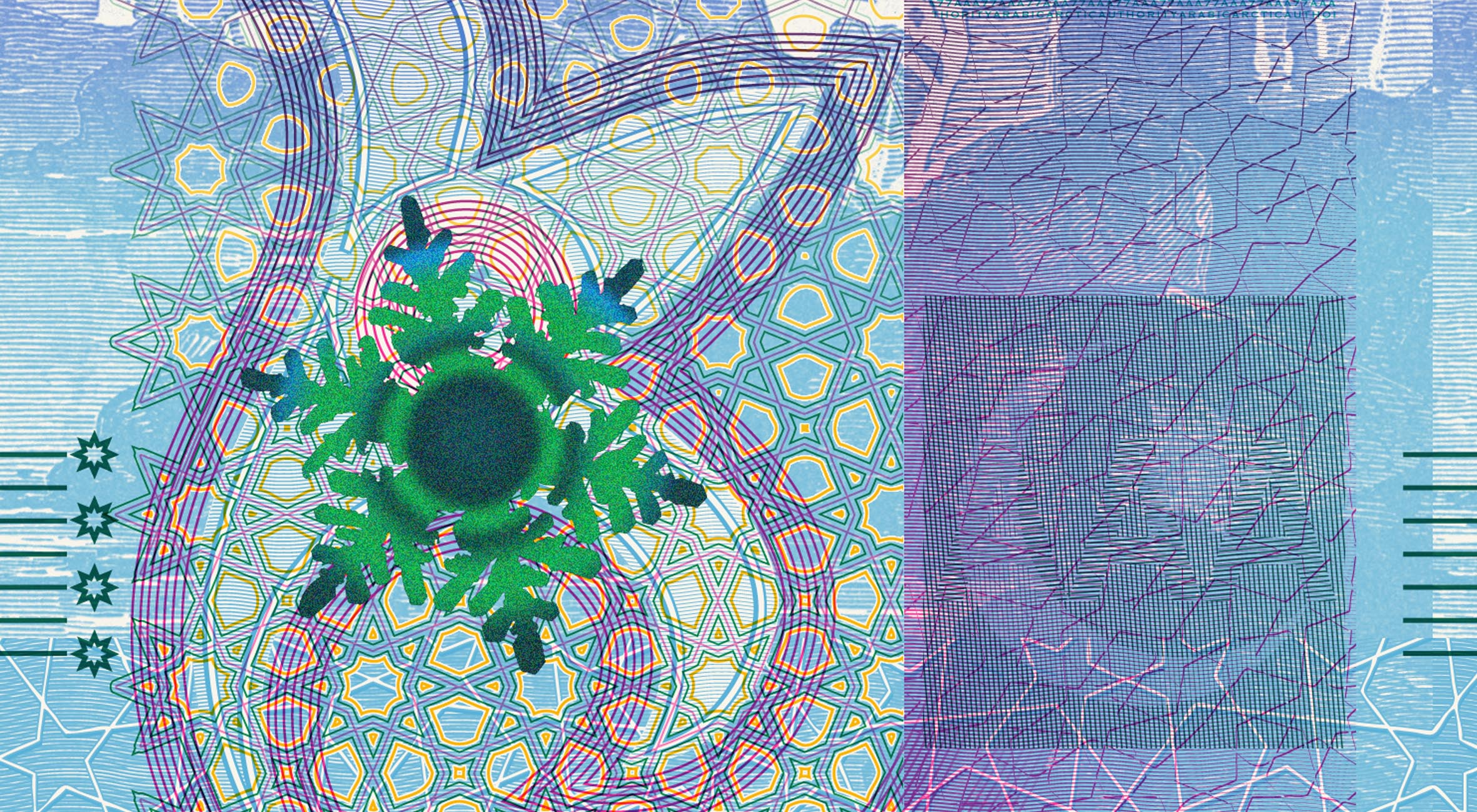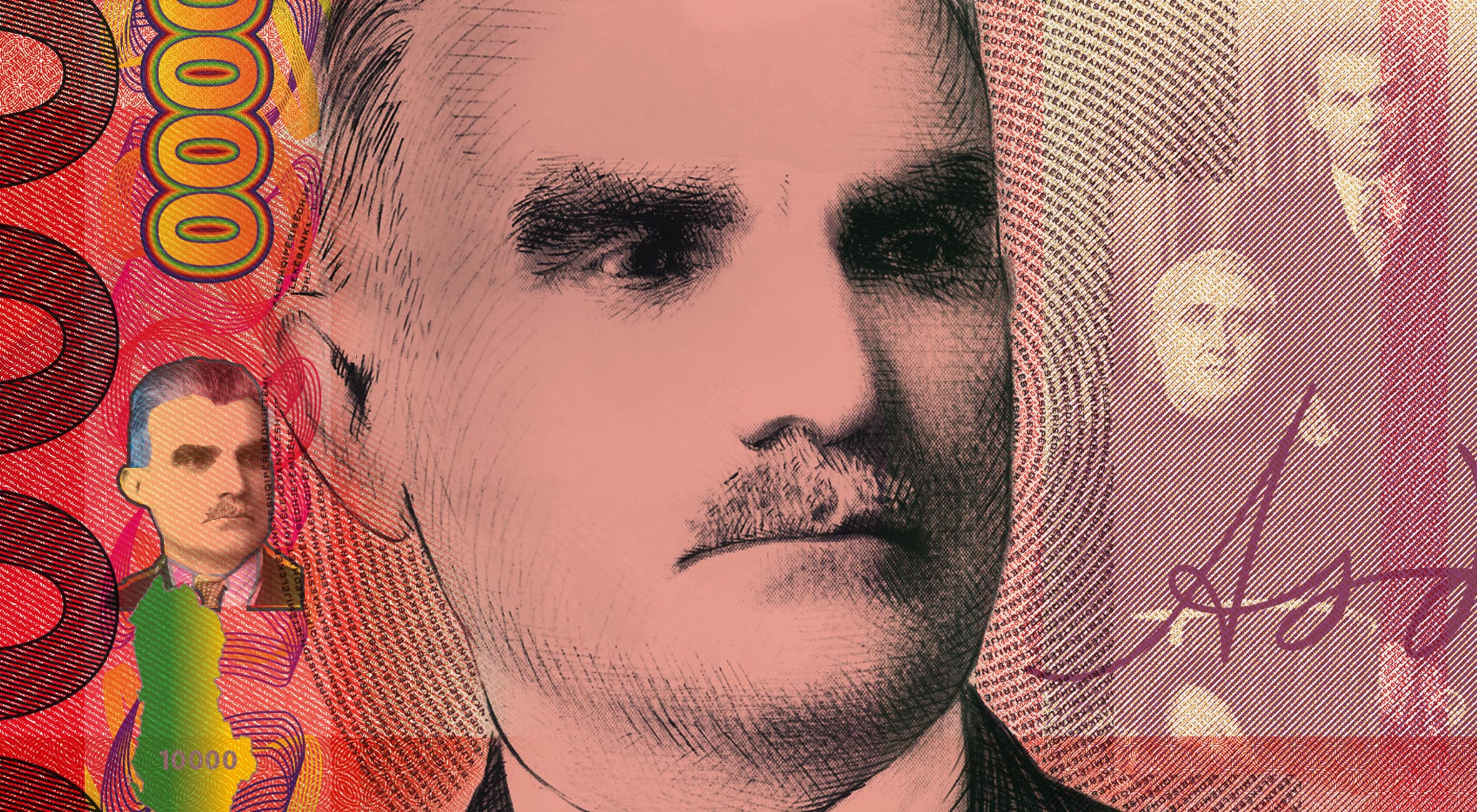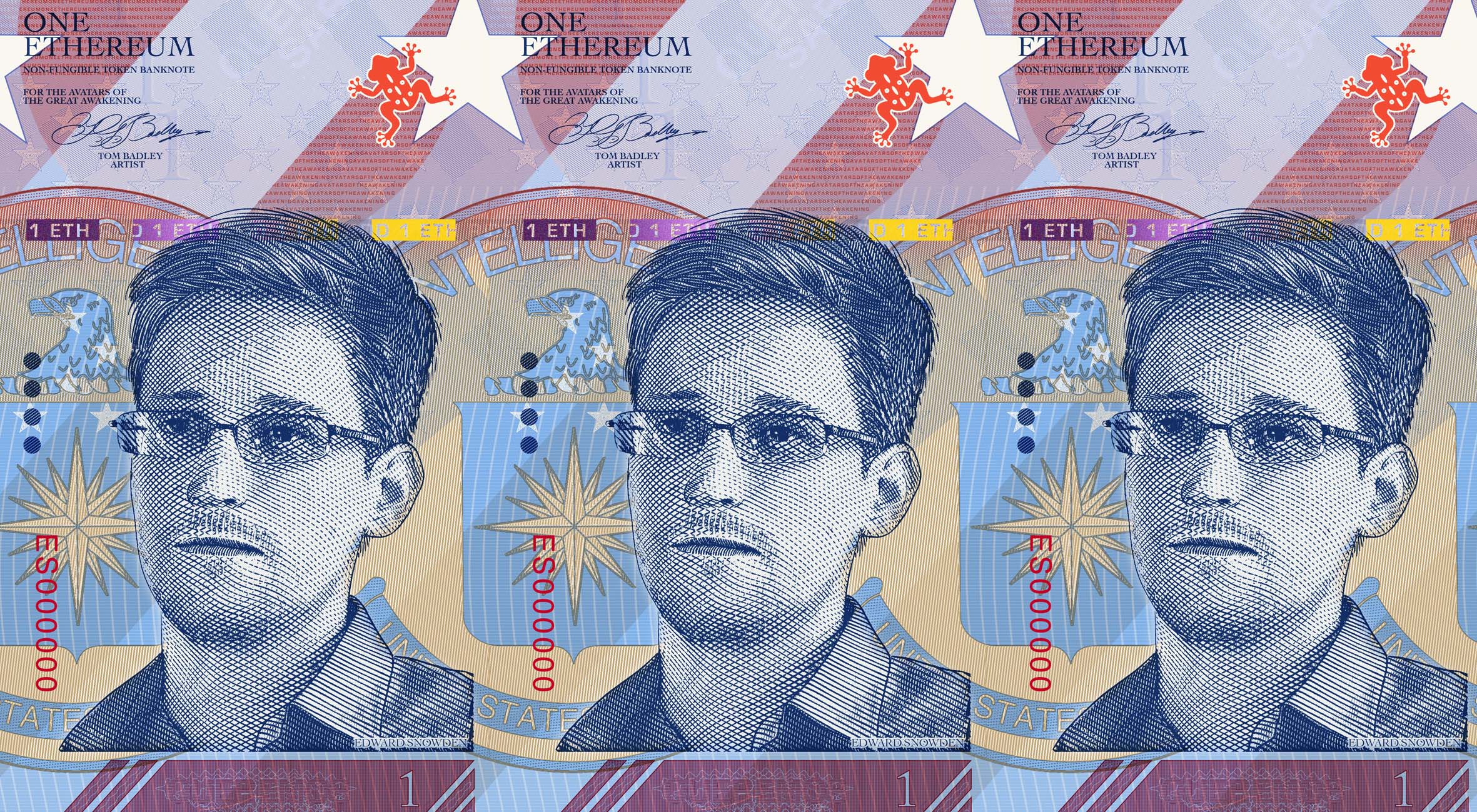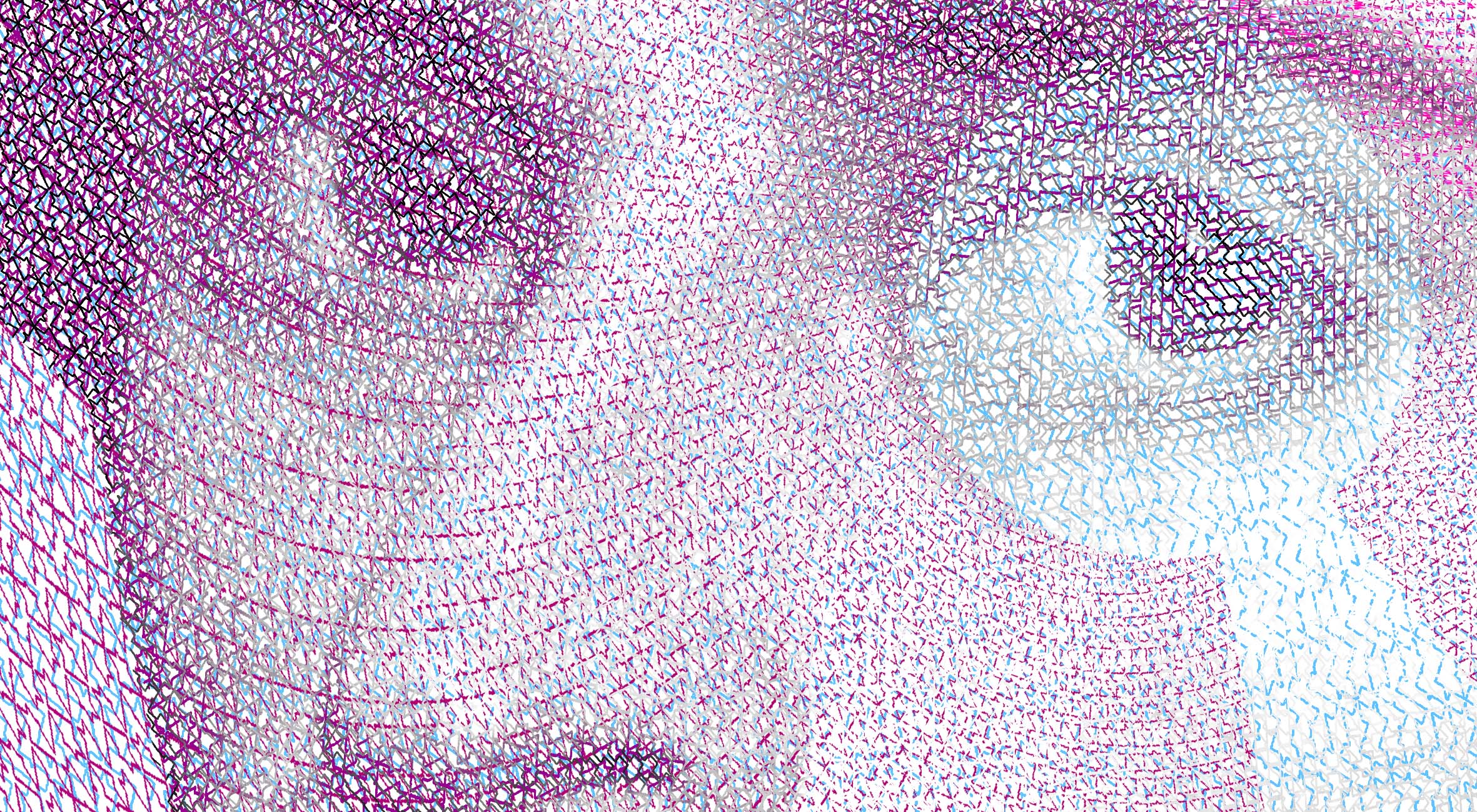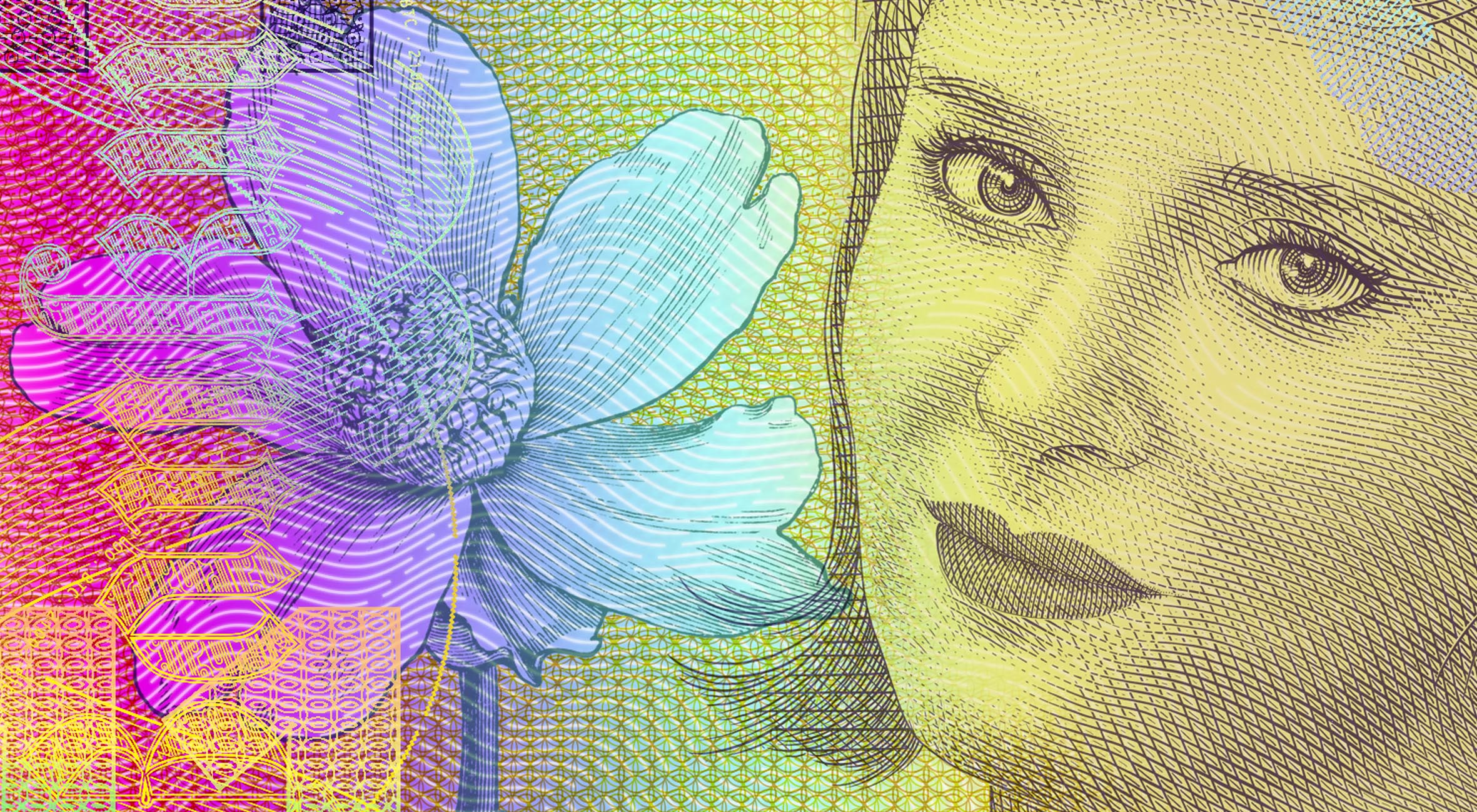DAI 'STABLECOIN NOTE' HISTORICAL SERIES
The First Stablecoin Banknote
DAI is an asset-backed cryptocurrency, and the first stablecoin on the Ethereum blockchain. Its sophisticated mechanism allows for a guarantee of stability through multiple asset backing. It can be used for hedging, payments, lending, and allows investors a 1-1 US Dollar safe haven without exiting the crypto market. This innovation was the inspiration and starting point for this new series of work – a banknote backed by DAI. This will mark the first time that such a product is proposed.
The Union of American Republics is a fictional jurisdiction appearing repeatedly in Tom Badley’s work. Taken from time traveler John Titor’s posts from 2001, this fictional country is a placeholder for a future vision of America – whatever that may be.
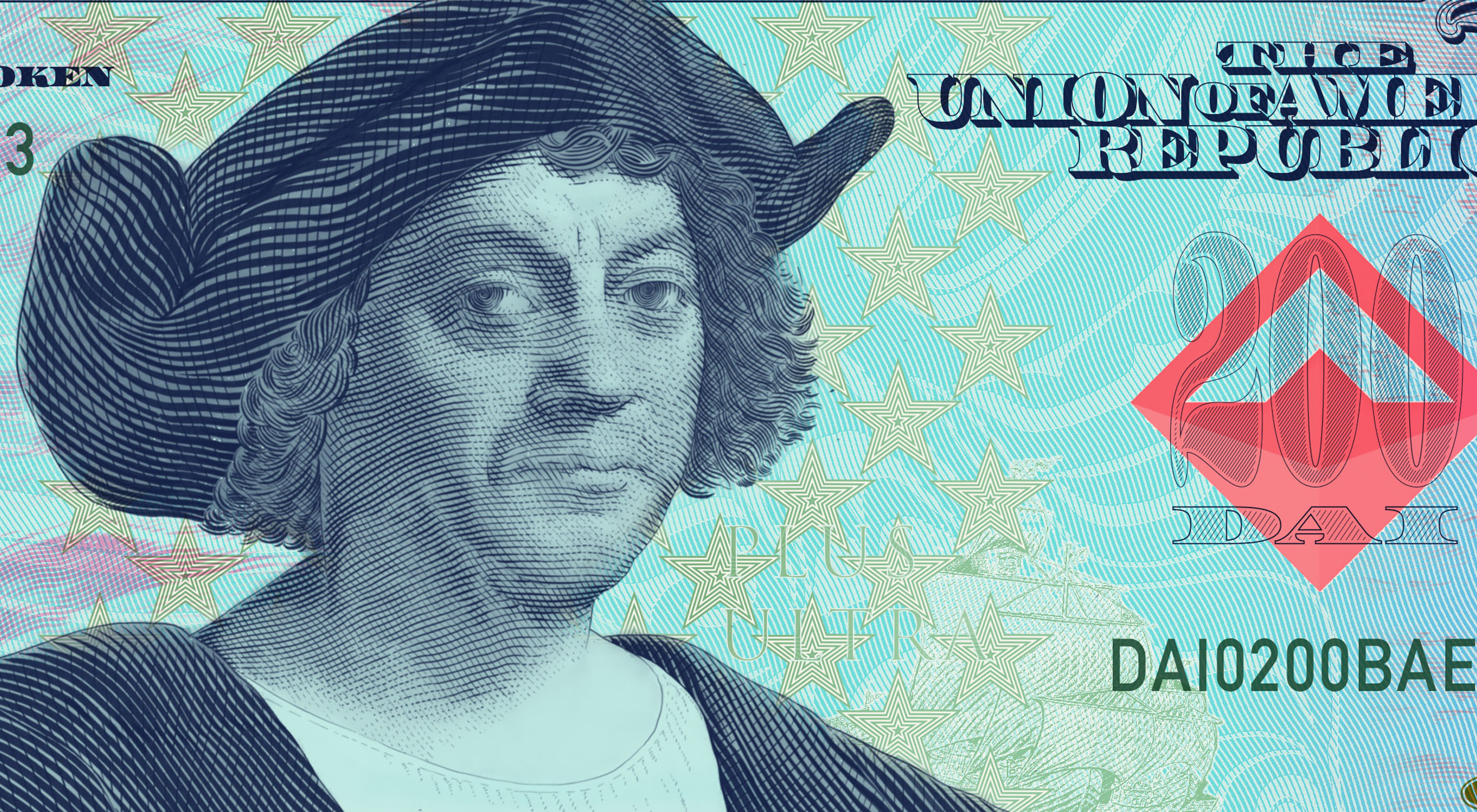
THE DAI ‘HISTORICAL’ SERIES
For the first in this new series, and a world first for the crypto art market, Tom Badley has released a speculative design for a 200 DAI banknote, featuring Christopher Columbus. It continues Badley’s work in branding cryptocurrencies with the gravitas and credibility of physical money, making crypto more relatable, user-friendly, and trusted. In this respect, banknotes are successful as money – they form a powerful source of trust in a currency, as physical and aesthetically pleasing products. These aspects are, for the most part, lost in cryptocurrency, which is often faceless and hard to use.
Whilst this series is denominated in DAI, it isn’t intended to be an extension of DAI’s existing brand. It acknowledges DAI in the design’s text, and with DAI’s logo in red, but that is the extent of the DAI brand on this design. Instead, the series is 1) a design and brand challenge, to give an existing Stablecoin a new and distinct persona, and 2) an inquiry into the mythology of DAI’s 1-1 basis: the United Sates Dollar. This series will feature prominent figures from history, all of whom were integral to the Unites States Dollar’s brand – it’s logo, and psychological meaning. This is a perfect way of marrying the mostly faceless brand of stablecoin cryptocurrency, with the rich power of the world’s reserve. It is a celebration of the innovation of a stable crypto dollar, as the ultimate iteration of the the Dollar’s global function.


Christopher Columbus is widely credited with the discovery of America in the modern age. Though historians may disagree, and evidence suggests intimate knowledge of the American continent existed long before Columbus – it doesn’t matter. Columbus is symbolic of America’s founding mythology, evidenced by Columbus’ name’s integration into American culture. CC is also integral to the Dollar’s formation. The $ Dollar sign is rumoured to be derived from the Pillars of Hercules (two vertical lines), wrapped in a banner (S). Ferdinand II of Aragon adopted the symbol of the Pillars of Hercules with the Latin phrase “Non Plus Ultra” – “nothing further beyond”. Christopher Columbus, upon arriving in America, changed the phrase to “Plus Ultra” – meaning ‘further beyond’. The Pillars of Hercules wrapped in the new banner thus became a symbol of the New World. When we think of cryptocurrency, we consider it nothing more than “further beyond” – breaking new ground. What a perfect way to encapsulate the innovation of reserve status cryptocurrency.
Though Christopher Columbus has been featured on US coinage, and a historical scene on a banknote, this is the FIRST TIME a bust portrait of CC has been proposed for dollar-based paper currency. The design also features stars, microtext, and the Santa Maria boat. The design retains some of the recognisable features of the US Dollar – the traditional layout, the guilloche border, and archaic typeface. This is combined with bolder colours, and larger, user-friendly numbers.





















